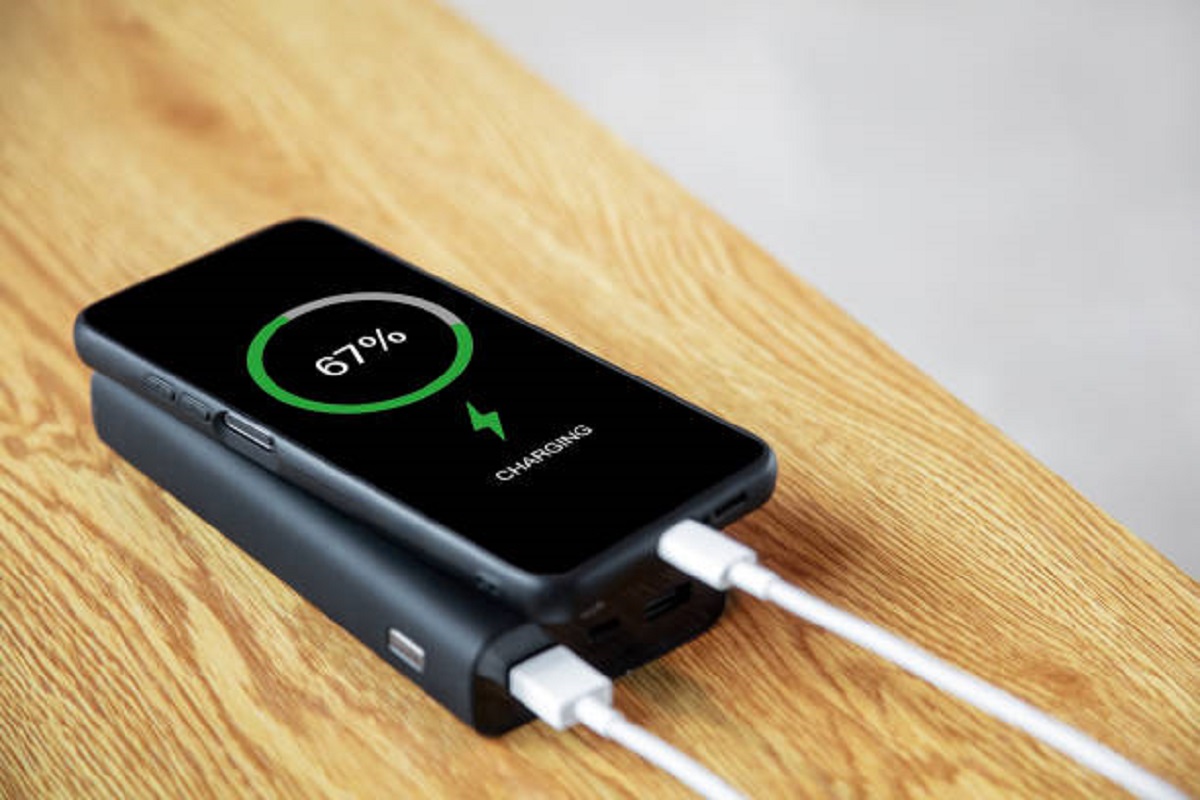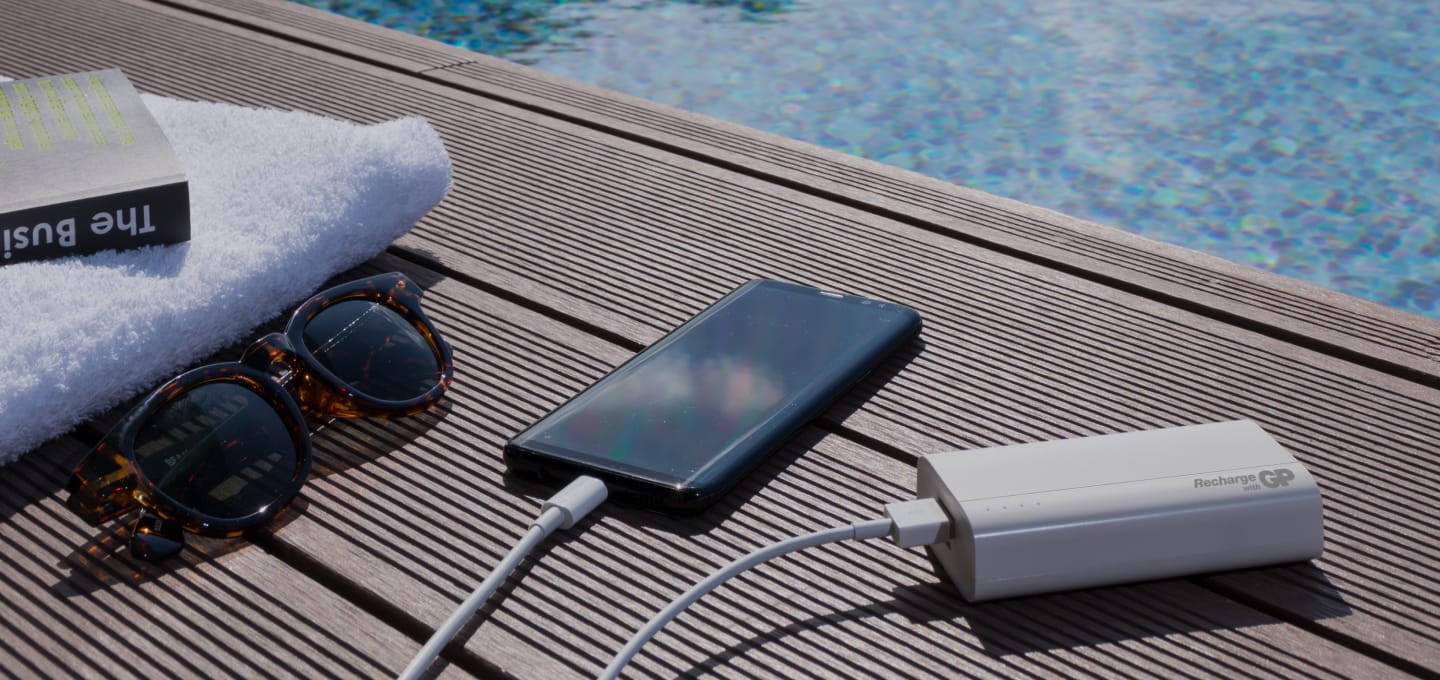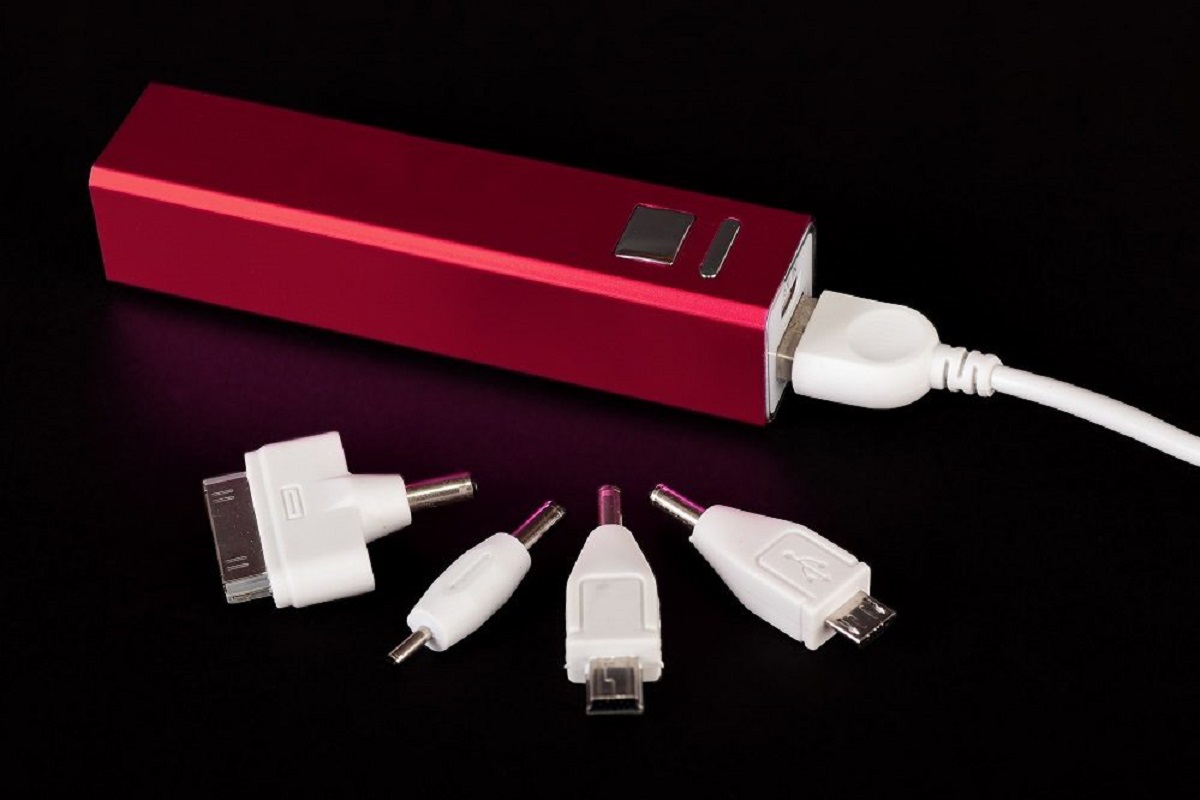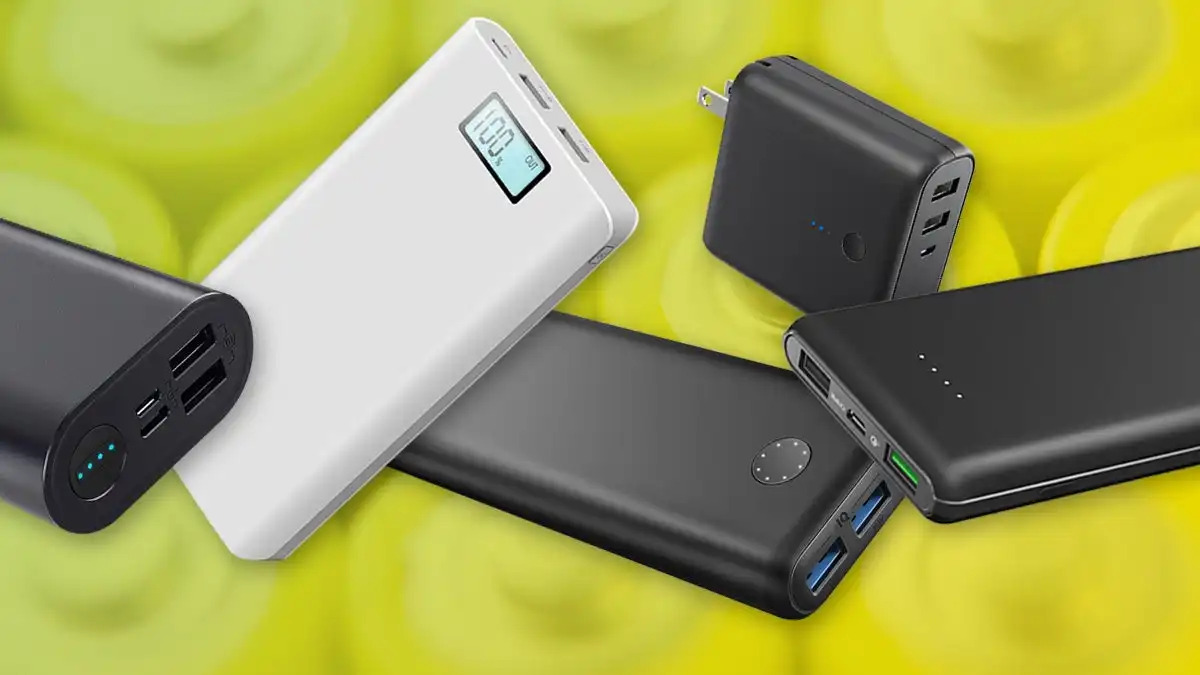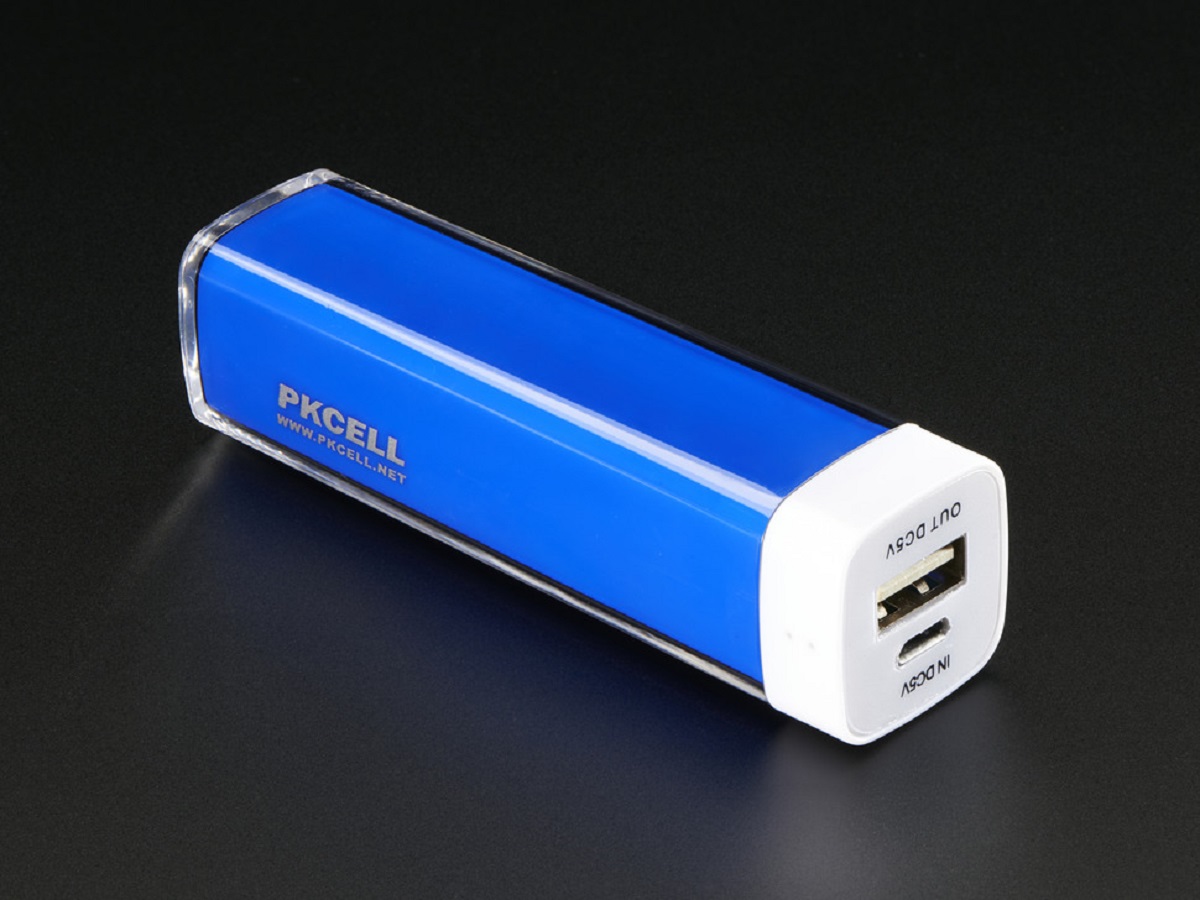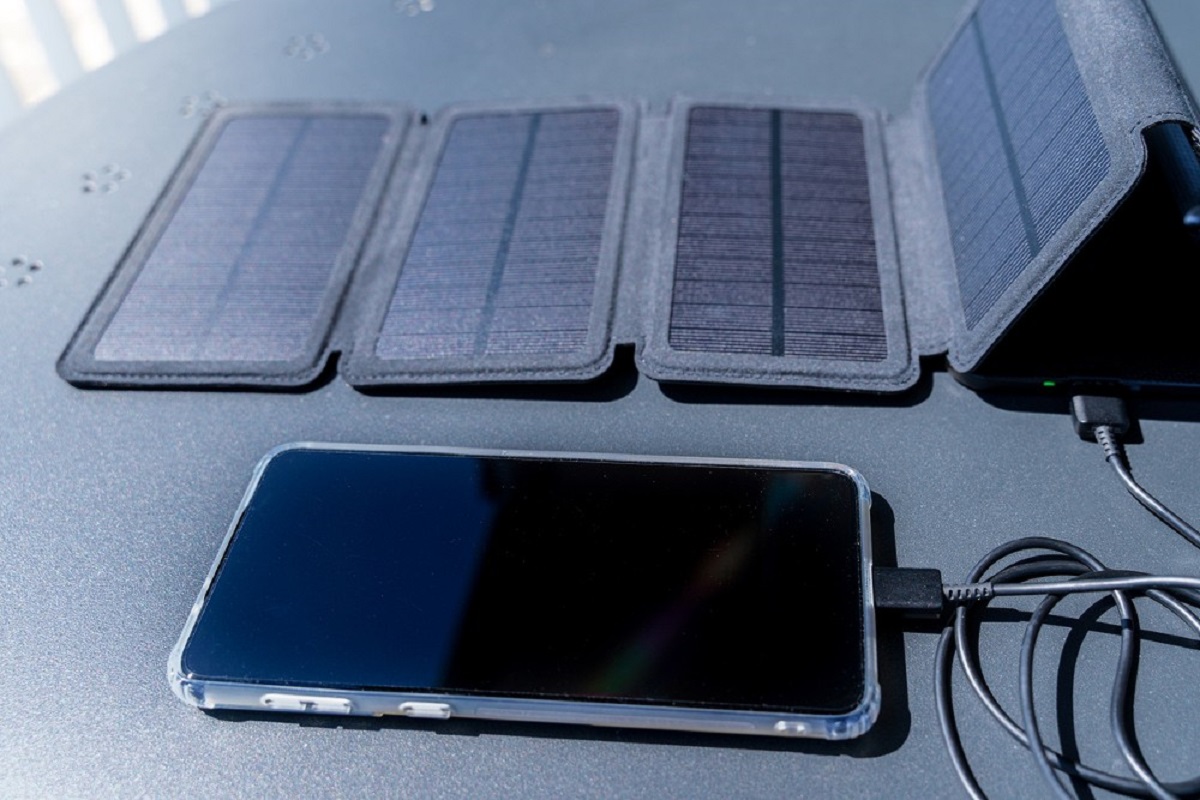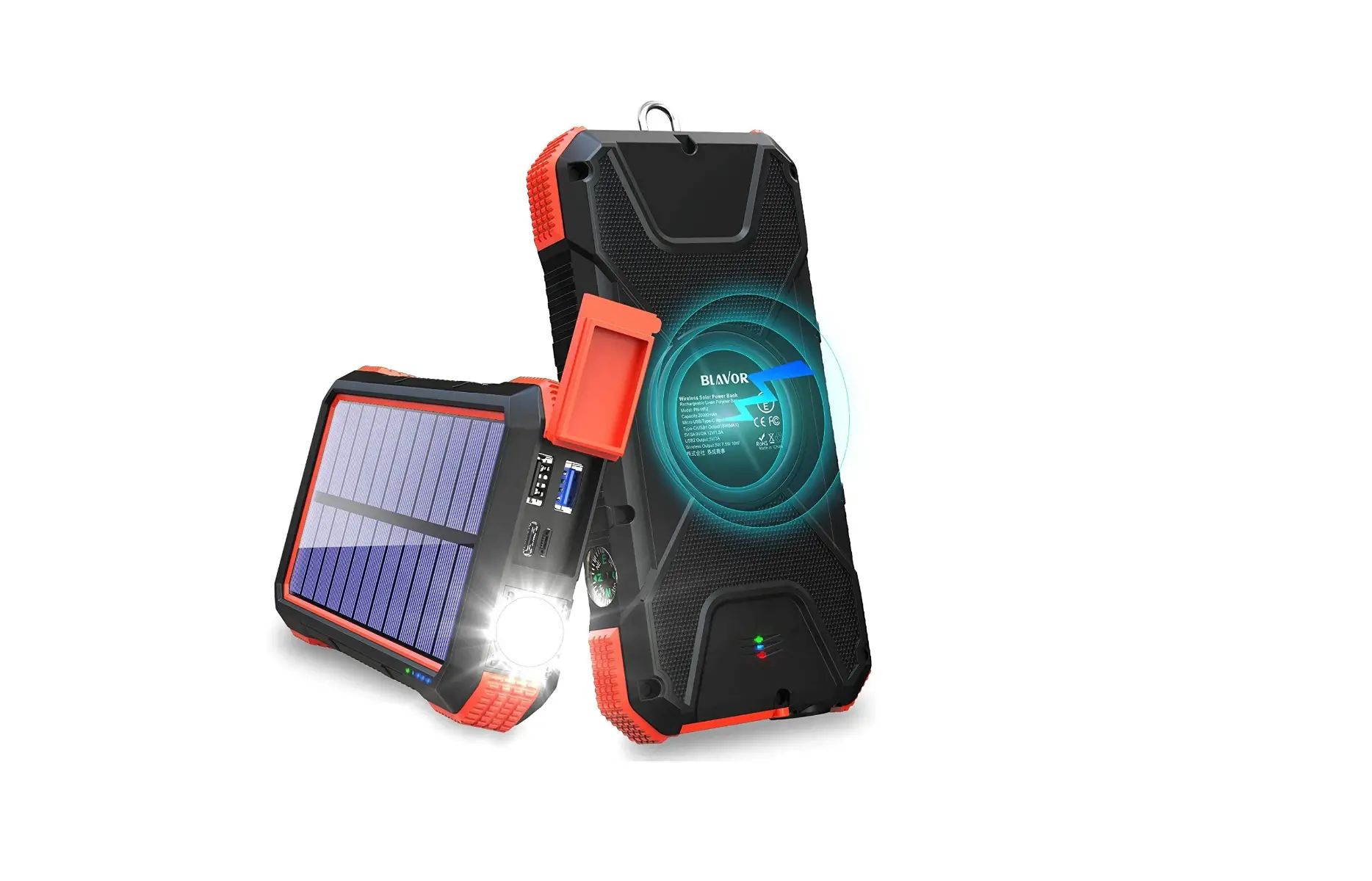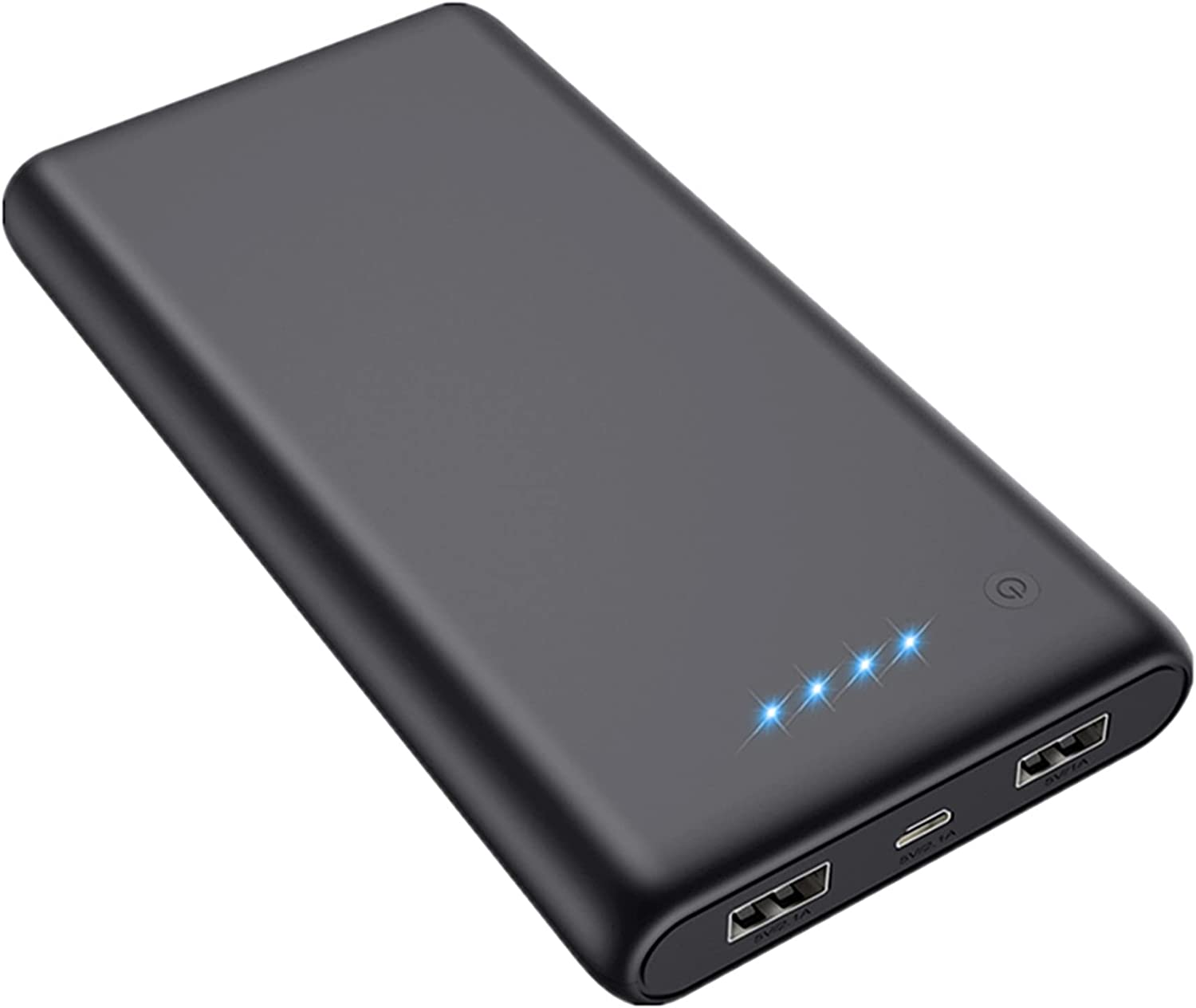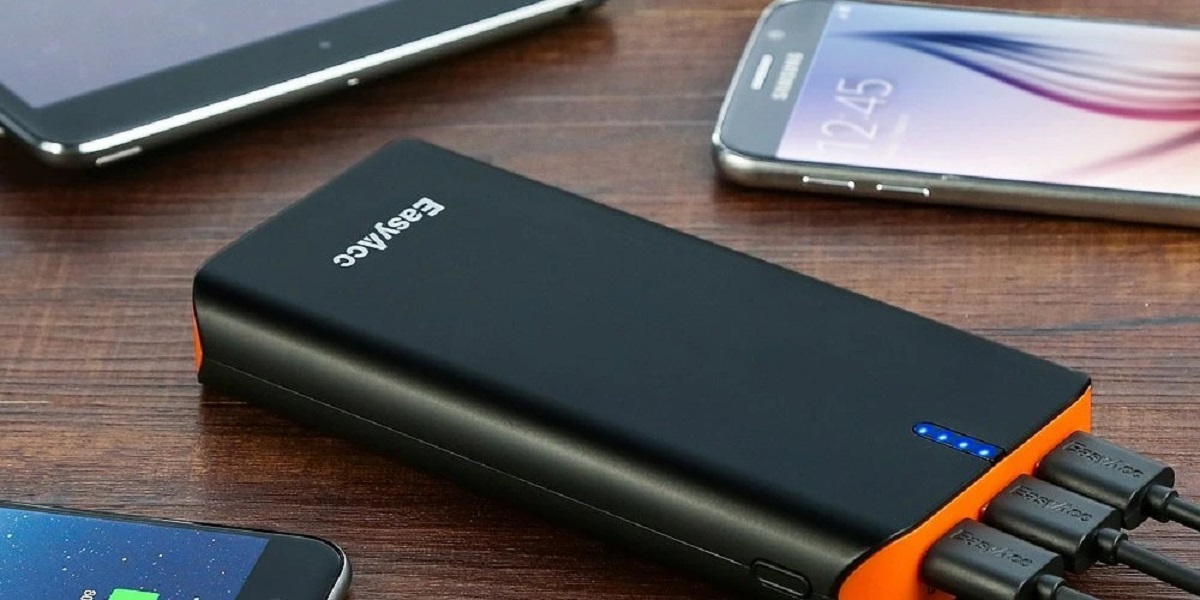Introduction
Welcome to the world of portable charging! In today’s fast-paced and tech-driven society, our devices have become our lifelines. From smartphones and tablets to laptops and wearables, we rely on these gadgets for various purposes throughout the day. However, the more we use them, the quicker their batteries drain. This is where a power bank comes to the rescue.
A power bank, also known as a portable charger, is a compact and portable device that provides on-the-go charging for your electronic devices. It acts as a backup power source, allowing you to charge your devices anytime and anywhere, without access to a wall outlet. Whether you’re traveling, attending meetings or conferences, or simply spending a day out, a power bank ensures that you stay connected and powered up.
The convenience and functionality of power banks make them an essential accessory for tech-savvy individuals. In this article, we will explore the world of power banks, discussing their importance, how to select the right one, how to charge and use them effectively, and some tips for extending their battery life.
So, if you find yourself constantly on the go and in need of a reliable power source for your devices, read on to discover everything you need to know about power banks and how to make the most out of them.
What is a Power Bank?
A power bank is a portable device that stores electrical energy and allows you to charge your electronic devices on the go. It serves as a portable power source, providing a convenient way to stay connected and powered up when you don’t have access to a wall outlet.
Power banks come in various shapes, sizes, and capacities. The capacity of a power bank is measured in milliampere-hours (mAh) and determines how much power it can store. The higher the mAh rating, the more charge it can hold, allowing you to charge your devices multiple times before needing to recharge the power bank itself.
Power banks typically have one or more USB ports, making them compatible with a wide range of devices, including smartphones, tablets, e-readers, portable speakers, and even some laptops. They also feature input ports for recharging the power bank itself, usually through a micro USB or USB-C cable.
Some advanced power banks may come with additional features like built-in cables, wireless charging capabilities, LED indicators to display remaining power, and even fast charging technologies. These features enhance the convenience and versatility of the power bank, making it even more user-friendly.
Power banks are particularly useful in situations where you can’t access a power outlet, such as during long flights, outdoor adventures, or emergencies. They are the perfect companion for travelers, hikers, students, and anyone who relies heavily on their electronic devices throughout the day.
Overall, a power bank is a handy device that provides peace of mind by ensuring that your devices stay charged and functional when you need them the most. In the next section, we will explore why you need a power bank in your life.
Why Do You Need a Power Bank?
In today’s digital age, our reliance on electronic devices has skyrocketed. Whether it’s for work, entertainment, communication, or navigation, we constantly find ourselves needing to use our smartphones, tablets, and other devices throughout the day. However, the more we use these devices, the faster their batteries drain, leaving us in a frustrating predicament.
This is where a power bank becomes an indispensable tool. Here are several reasons why you need a power bank in your life:
- Convenience: A power bank offers unmatched convenience when it comes to charging your devices on the go. Whether you’re traveling, attending meetings, or simply out and about, having a power bank allows you to charge your devices anytime, anywhere. Say goodbye to the hassle of searching for power outlets or carrying bulky chargers.
- Emergency situations: Power outages, natural disasters, or being in remote areas with limited access to electricity can happen at any time. In such situations, a power bank becomes a crucial asset. It ensures that you can stay connected, reach out for help, or use GPS for navigation when needed.
- Extended usage: Power banks enable you to use your devices for longer periods without worrying about battery life. Whether you’re on a long flight, attending a full-day event, or going on an outdoor adventure, a power bank can keep your devices powered up and functional throughout the day.
- Device compatibility: Power banks are compatible with a wide range of devices, including smartphones, tablets, e-readers, Bluetooth speakers, smartwatches, and more. This versatility ensures that you can charge multiple devices with a single power bank, eliminating the need for multiple chargers.
- Cost-effective: Instead of investing in extra batteries or relying on charging stations, a power bank offers a cost-effective solution. By recharging your devices on the go, you can save money on purchasing extra batteries and reduce your reliance on electrical outlets.
With all these advantages, it’s clear why a power bank is an essential gadget for anyone who values staying connected and powered up in today’s digital world. In the next section, we will explore the key factors to consider when choosing the right power bank for your needs.
How to Choose the Right Power Bank
When it comes to selecting the right power bank for your needs, there are several key factors to consider. By keeping these factors in mind, you can ensure that you choose a power bank that aligns with your specific requirements and provides optimal charging performance. Here’s a guide on how to choose the right power bank:
- Capacity: The capacity of a power bank is measured in milliampere-hours (mAh), which indicates how much charge it can hold. Consider the battery capacity of your devices and choose a power bank that offers enough capacity to charge them fully. For example, if your smartphone has a 3000mAh battery, a power bank with a capacity of 10,000mAh would be able to charge it multiple times.
- Number of ports: Determine how many devices you usually need to charge simultaneously. Power banks come with varying numbers of USB ports, allowing you to charge multiple devices at once. If you often need to charge multiple devices, opt for a power bank with two or more ports.
- Output current: The output current of a power bank determines how fast it can charge your devices. Look for power banks with higher output currents, such as 2.1 amps or above, as they can provide faster charging speeds, especially for larger devices like tablets and laptops.
- Input charging speed: Consider the input charging speed of the power bank itself. A power bank that can be charged quickly means less downtime between recharges. Look for power banks with input charging speeds of 2 amps or higher for faster and more efficient recharging.
- Portability: If you’re planning to carry the power bank with you wherever you go, consider its size and weight. Smaller and lighter power banks are more portable and easier to carry in your bag or pocket. However, keep in mind that smaller power banks often have lower capacities.
- Additional features: Some power banks come with additional features like built-in cables, wireless charging capabilities, LED indicators, or even fast charging technologies. Determine which features are important to you and choose a power bank that offers the functionality you need.
- Brand and reviews: Research different power bank brands and read reviews from other customers to get an idea of their reliability, durability, and customer satisfaction. Opt for reputable brands that have a track record of producing high-quality power banks.
By considering these factors and evaluating your personal needs, you can make an informed decision when choosing the right power bank. In the next section, we will explore how to charge a power bank effectively to ensure optimal performance.
How to Charge a Power Bank
Charging a power bank is a simple process, but it’s important to do it correctly to ensure optimal performance and longevity of the device. Here’s a step-by-step guide on how to charge a power bank:
- Check the power bank’s charge level: Before charging, check the power bank’s battery level. Most power banks come with LED indicators that show the remaining charge. It’s recommended to fully charge the power bank before its first use.
- Use the right charging cable: Power banks typically come with a micro USB or USB-C cable for charging. Make sure you use the provided cable or a high-quality cable that is compatible with your power bank’s input port. Using a low-quality or incompatible cable can result in slow charging or damage to the power bank.
- Connect the cable to the power bank: Insert one end of the cable into the power bank’s input port. Make sure it is firmly connected to avoid any connection issues during charging.
- Connect the other end of the cable to a power source: Plug the other end of the cable into a wall charger, laptop, or any other USB power source. Ensure that the power source is functioning correctly and provides enough power to charge the power bank.
- Monitor the charging process: Once connected, the power bank’s LED indicators may light up to indicate that it is charging. Typically, the LEDs will flash or change color to indicate the progress. It’s essential to monitor the charging process and make sure the power bank is charging properly.
- Allow sufficient charging time: The charging time required will depend on the capacity of the power bank and the input charging speed. It’s recommended to allow several hours for the power bank to fully charge. Avoid disconnecting the power bank prematurely, as it may not provide a full charge to your devices.
- Disconnect the power bank: Once fully charged, disconnect the power bank from the power source by removing the cable. Ensure that you safely unplug the cable to avoid any damage to the power bank or the cable itself.
By following these steps, you can effectively charge your power bank and ensure that it is ready to provide a reliable power source for your devices. In the next section, we will explore how to use a power bank to charge your devices and keep them powered up throughout the day.
How to Use a Power Bank to Charge Your Devices
Using a power bank to charge your devices is a straightforward process that allows you to stay connected and powered up when you’re on the go. Here’s a step-by-step guide on how to use a power bank to charge your devices:
- Ensure the power bank is charged: Before using a power bank, make sure it is fully charged or has enough battery level to provide sufficient power for your devices. Refer to the power bank’s LED indicators to check its charge level.
- Choose the right cable: Depending on the device you want to charge, use the appropriate charging cable. Most power banks come with USB ports, allowing you to connect various devices using their respective USB cables.
- Connect the cable to the power bank: Insert the USB end of the cable into one of the power bank’s output ports. Make sure the connection is secure and tight.
- Connect the cable to your device: Connect the other end of the cable, which corresponds to the charging port of your device, such as a smartphone or tablet. Ensure a stable connection to avoid interruptions during charging.
- Start the charging process: Once the cable is properly connected, the power bank will automatically detect the device and begin charging. Most power banks have LED indicators that show the charging progress or remaining charge.
- Monitor the charging process: Keep an eye on both the power bank and the device being charged. The power bank’s LED indicators may flash, change color, or turn off to indicate the progress, while the device’s battery icon should show it is charging.
- Wait for the device to fully charge: The time it takes for the device to fully charge will depend on several factors, including the capacity of both the power bank and the device’s battery, as well as the charging speed. Generally, it’s recommended to leave the device connected until it reaches a full charge.
- Disconnect the device: Once the device is fully charged, safely disconnect it by removing the cable from both the device and the power bank. Avoid pulling the cable forcefully, as it may damage the connectors.
- Store the power bank: After using the power bank, store it in a safe place away from extreme temperatures, moisture, and direct sunlight. It’s essential to maintain the power bank’s longevity and performance by following the manufacturer’s recommended storage guidelines.
By following these steps, you can effectively use a power bank to charge your devices and ensure that you stay powered up throughout the day. In the next section, we will share some valuable tips for extending the battery life of your power bank.
Tips for Extending Power Bank Battery Life
A power bank is a valuable tool for keeping your devices charged on the go. To ensure that your power bank remains reliable and performs optimally, it’s essential to take proper care of its battery. Here are some tips for extending the battery life of your power bank:
- Use the right charging cable and adapter: Always use the provided charging cable and a compatible adapter to charge your power bank. Using incorrect or low-quality cables and adapters can result in slow charging or damage to the battery.
- Avoid extreme temperatures: Keep your power bank away from extreme heat or cold, as it can adversely affect the battery’s performance and lifespan. High temperatures can cause the battery to degrade quickly, while extremely low temperatures can reduce its capacity temporarily.
- Charge it regularly: Even when not in use, it’s recommended to charge your power bank at least every 3-4 months. This helps maintain the battery’s health and prevents it from entering a deep discharge state.
- Disconnect after full charge: Once your power bank is fully charged, disconnect it from the power source. Overcharging can shorten the battery’s lifespan and potentially lead to overheating or other safety issues.
- Avoid draining the battery completely: Try to avoid completely draining the power bank’s battery before recharging it. Keeping the battery level above 20% is ideal for maintaining its longevity and overall performance.
- Don’t charge and discharge simultaneously: Avoid using your power bank while it is charging another device. Charging and discharging at the same time can generate excessive heat, which can harm the battery and potentially reduce its lifespan.
- Store in a cool and dry place: When not in use, store your power bank in a cool and dry environment. Excessive moisture and humidity can damage the internal components and lead to battery degradation.
- Avoid physical damage: Handle your power bank with care and avoid dropping or exposing it to rough treatment. Physical damage can impact the battery’s performance and safety.
- Use power bank regularly: To keep the battery active, make sure to use your power bank regularly. Periodic use and charging help maintain the battery’s capacity and ensure its longevity.
- Follow manufacturer’s instructions: Always refer to the manufacturer’s guidelines and instructions for specific care and maintenance tips for your power bank. Each device may have unique recommendations to maximize battery life.
By following these tips, you can ensure that your power bank stays in optimal condition and provides reliable power whenever you need it. Taking care of your power bank’s battery prolongs its lifespan, ensures safe operation, and allows you to enjoy uninterrupted charging on the go.
Conclusion
Power banks have become an essential accessory for anyone who relies on their electronic devices throughout the day. Whether you’re a frequent traveler, an outdoor enthusiast, or simply someone who wants to stay connected without the limitations of a wall outlet, a power bank offers the convenience and peace of mind you need.
In this article, we explored what a power bank is and why it is important in our tech-driven society. We discussed how to choose the right power bank by considering factors such as capacity, number of ports, output currents, and additional features. We also covered the steps to effectively charge a power bank and how to use it to charge your devices on the go.
Additionally, we provided valuable tips for extending the battery life of your power bank, emphasizing the importance of using the right charging cable and adapter, avoiding extreme temperatures, and maintaining regular charging habits.
By following these guidelines, you can ensure that your power bank remains reliable, efficient, and long-lasting, providing you with the power you need whenever and wherever you need it.
So, whether you’re a busy professional, a student, or an adventure seeker, investing in a high-quality power bank will prove to be a worthwhile decision. Stay connected, stay powered up, and never let a drained battery disrupt your day again!







